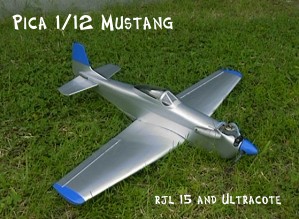|
|
|
| ROCKS' ARTICLES | |||||||||||||
| Planes, People, and Events from Hampton, Newport News, and York County Virginia | |||||||||||||
|
|||||||||||||

|
|
||||||||||||
|
I was very surprised to see how small the box was. Inside I found the kit contents well packed and in good condition. I spent several nights reviewing the plans and reading the 14 page instruction manual. At first I didn't understand the instructions, but soon I realized what they were saying. The instructions are actually pretty good. Some of the slow readers, like me, could have used a few more measurements and details. But I figured out what I was supposed to do. |
|||||||||||||
|
BuildingOnce I started building, things went fast. I started building on Friday night and had the entire plane finished by the following Friday! Following the instructions, I quickly built the sub-assemblies and laminations. Gluing the two firewall pieces together, and finishing the verticle and horizontal stabilizers was quick and easy. Next I assembled the fuselage. Pica's extensive use of interlocking tabs made construction quick! I had the fuse finished by Saturday night. Because the elevator pushrod is buried inside the fuselage, I installed the servos before I glued the bottom sheeting in place. This allowed me access to set the elevator throw.Since I had an RJL .15 available, I used it on this kit. Unfortunately, the RJL's rear exhaust created some problems. I couldn't mount the engine inverted as the plans directed, and I had to butcher some of the plastic turtle deck and cowl to get the muffler clearance. I won't use a rear exhuast engine in this type of model again. The problems I encounter with engine installation took me two nights to figure out. If I had installed a standard engine, installation would have taken an hour or two. |
|||||||||||||
|
I spent Thursday and Friday covering the plane. The plastic fuselage turtle deck extends from nose to tail. I waited until the entire plane was covered before I glued this piece in place. Here's a quick tip -- don't use RC 560 type glue for this part. What a mess! A friend of mine explained how he glued his plastic turtle deck using CA, that is definately a better procedure than I used. FlyingWell here's the really embarassing part. I attempted to hand launch the plane myself on its first flight. Big mistake. I had far too much aileron control and the plane went left, then right, then left again! Finally it stopped when it hit the ground. Fortunately, Pete Rundel let me fly his Pica Mustang. He had his plane setup with an OS 15Fp and mini radio gear. She flew just fine with 1/8 inch aileron throws and less than 1/4 inch elevator. The 15 pulled her around fine, and her turn rate was acceptable. Even though the wind was blowing pretty steady, the Pica Mustang was very steady.Overall, I liked the Pica 1/12 scale Mustang, and I can't wait to try their .26 size Mustang. Go take a look at their variety of 1/12 scale combat kits, ARFs, and ARTs. http://picaweb.com |
|||||||||||||
|
|||||||||||||
|
|||||||||||||
| This page is best viewed at 800 x 600 resolution and 24bit color with font viewing set at medium on MS IE 5 | |||||||||||||
| Please email comments, questions, or concerns to Wjmillerjr@aol.com All rights reserved. | |||||||||||||